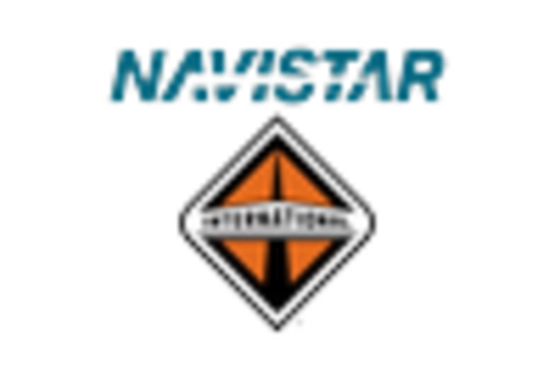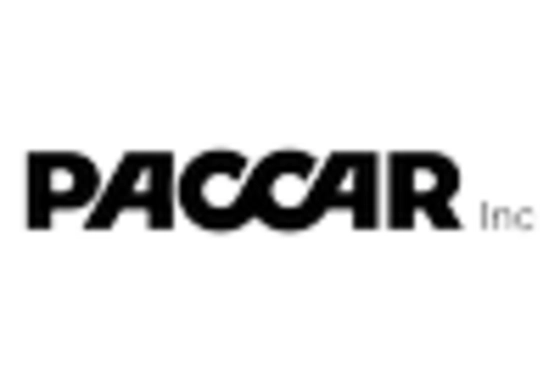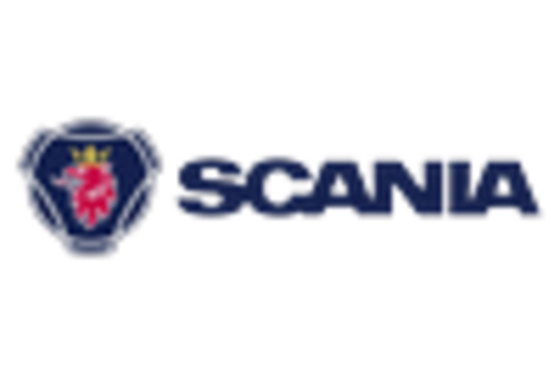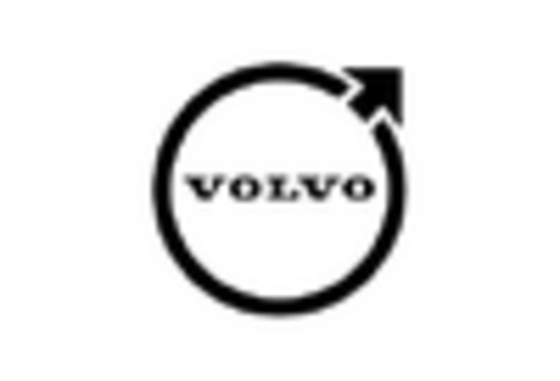Growing Demand for Fuel Efficiency
The Heavy Duty Trucks On-Board Diagnostics System Market is significantly influenced by the growing demand for fuel efficiency. As fuel prices continue to fluctuate, fleet operators are increasingly seeking solutions that can help reduce fuel consumption. On-board diagnostics systems that provide insights into engine performance and fuel usage are becoming essential tools for achieving these goals. The market is likely to expand as more companies recognize the potential for cost savings through improved fuel efficiency. Estimates suggest that the market could grow by approximately 5% annually as operators invest in technologies that enhance fuel management and reduce overall operational costs.
Regulatory Compliance and Standards
Regulatory compliance plays a crucial role in shaping the Heavy Duty Trucks On-Board Diagnostics System Market. Governments worldwide are implementing stringent emissions regulations and safety standards that necessitate the use of advanced diagnostic systems. These regulations compel manufacturers to develop systems that not only meet compliance requirements but also enhance vehicle performance. The market is likely to see increased demand for on-board diagnostics systems that can provide real-time emissions data and ensure adherence to environmental standards. As a result, companies that invest in compliance-focused technologies may gain a competitive edge, potentially leading to a market growth rate of around 6% annually.
Increased Focus on Safety and Maintenance
Safety and maintenance are paramount concerns in the Heavy Duty Trucks On-Board Diagnostics System Market. The rising number of road accidents involving heavy-duty trucks has prompted a greater emphasis on safety features and regular maintenance checks. On-board diagnostics systems that monitor critical vehicle parameters can alert operators to potential safety issues before they escalate. This proactive approach to maintenance not only enhances safety but also extends the lifespan of vehicles. The market is expected to see a growth rate of around 7% as companies prioritize safety and invest in advanced diagnostic technologies that ensure compliance with safety regulations.
Technological Advancements in Diagnostics
The Heavy Duty Trucks On-Board Diagnostics System Market is experiencing a surge in technological advancements. Innovations such as real-time data analytics and predictive maintenance are becoming increasingly prevalent. These technologies enable fleet operators to monitor vehicle performance continuously, leading to enhanced efficiency and reduced downtime. The integration of artificial intelligence and machine learning into diagnostic systems allows for more accurate fault detection and quicker resolution of issues. As a result, the market is projected to grow significantly, with estimates suggesting a compound annual growth rate of over 7% in the coming years. This growth is driven by the need for more sophisticated diagnostic tools that can handle the complexities of modern heavy-duty trucks.
Telematics Integration and Fleet Management
The integration of telematics into the Heavy Duty Trucks On-Board Diagnostics System Market is transforming fleet management practices. Telematics systems provide valuable insights into vehicle health, driver behavior, and operational efficiency. By combining on-board diagnostics with telematics, fleet operators can optimize maintenance schedules and reduce operational costs. This integration is expected to drive market growth, with projections indicating a potential increase of 8% in market size over the next five years. The ability to access real-time data remotely allows for proactive decision-making, which is becoming essential in the competitive transportation sector.

















Leave a Comment